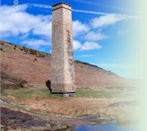The Industrial Archaeology and History of the Eastern Valley
Or click on the button to go to :-
Click on the thumbnail to enlarge a photo or map and sometimes read more about it.
Then click 'Full Size' on the toolbar to see it in all its glory.
The Glyn Pits
The Glyn Pits complex consisted of three sites, Glyn Pits nos 1 and 2, Glyn Pits nos 3 and 4 and the Balance Pit. They were also known as Cwm-y-Glyn Colliery and the Race Colliery. Their history starts in the 1830s when Capel Hanbury Leigh sank the Balance Pit. Glyn Pits nos 1 and 2 followed early in the 1840s, the beam engine house is dated 'CHL 1845'. By 1855 the colliery was in the hands of the Ebbw Vale Iron Co and the Balance Pit seems to have been disused by the 1860s. An explosion in 1890 killed 5 men whose bodies were never recovered. Glyn Pits nos 3 and 4 appear to have been sunk in the 1890s but had finished by 1920. Glyn Pits nos 1 and 2 ceased coal winding in 1928 and became a pumping site for Hafodyrynys, finally closing in 1949 under NCB ownership.
Glyn Pits Nos 1 and 2 - ST 2656 9984
Glyn Pits Nos 1 and 2 are the oldest and only remaining part of the complex dating from 1845 and not finally finishing work until 1949. The buildings contain the historic beam and winding engines with the shafts, ventilation gear and the reservoir around them.
Glyn Pits Nos 1 and 2 - The historical view
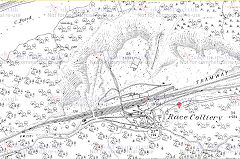
Glyn Pits Nos 1 and 2 in 1881
|

Glyn Pits Nos 1 and 2 in 1901
|
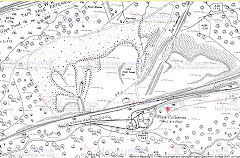
Glyn Pits Nos 1 and 2 in 1920
|

Glyn Pits Nos 1 and 2 in 1965
|
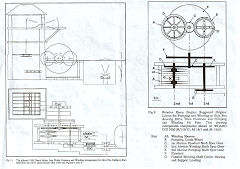
Glyn Pits drawings
|
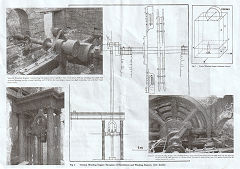
Glyn Pits drawings
|
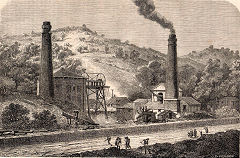
Glyn Pits in 1865
|

Glyn Pits c1900
|
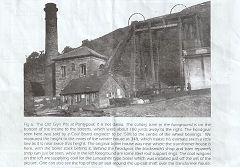
Glyn Pits c1930
|
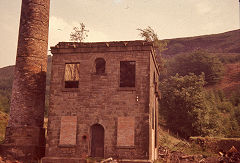
Glyn Pits c1960
|
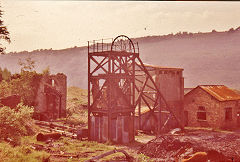
Glyn Pits c1960
|
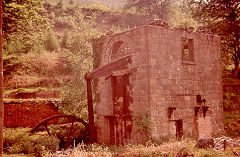
Glyn Pits c1960
|

Glyn Pits, November 1969
|

Glyn Pits, November 1969
|
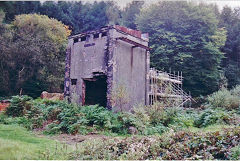
The demolished transformer house
|
|
Glyn Pits Nos 1 and 2 in more recent times

Glyn Pits in 2006
|

Glyn Pits in 2006
|
|
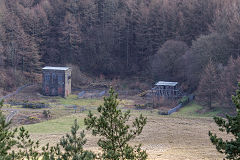
Glyn Pits from Coch-y-North
|
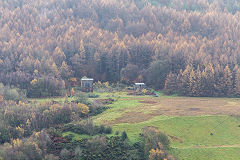
Glyn Pits from Coch-y-North
|

Glyn Pits from Coch-y-North
|
The vertical engine and winding house
The vertical engine and winding house were built around 1865 by an unknown builder and is house-built as it's an integral part of the bulding around it. The winding drums are directly above the engine and use flat ropes wound over each other on a reel rather than the later drum-type winders.
The winding house
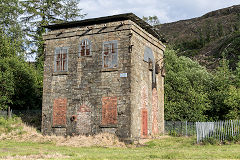
The winding house
|
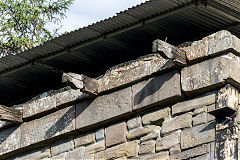
The winding house
|
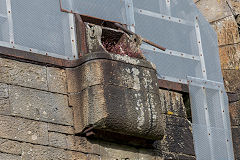
The winding house
|
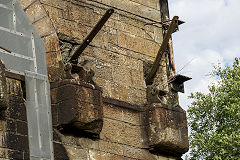
The winding house
|
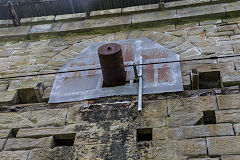
The winding house
|
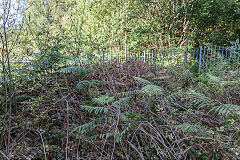
The base of the chimney
|
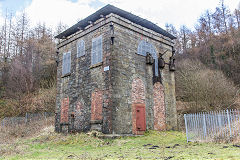
The winding house
|
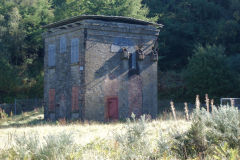
The winding house
|
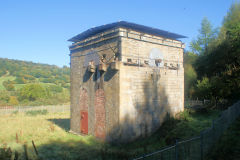
The winding house
|
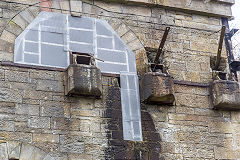
The winding house
|
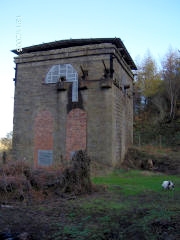
The winding house
|
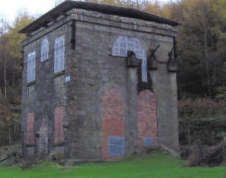
The winding house
|
The vertical winding engine
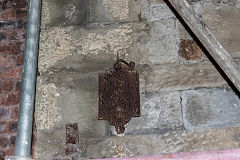
The vertical winding engine
|
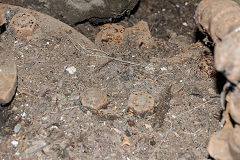
The vertical winding engine
|
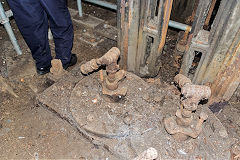
The vertical winding engine
|

The vertical winding engine
|

The vertical winding engine
|

The vertical winding engine
|
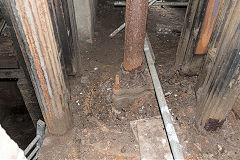
The vertical winding engine
|
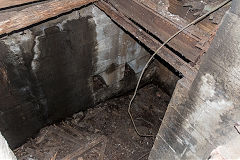
The vertical winding engine
|
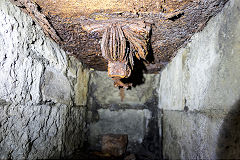
The vertical winding engine
|
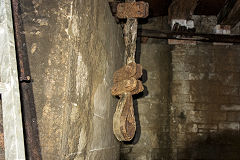
The vertical winding engine
|
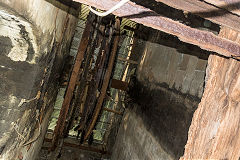
The vertical winding engine
|
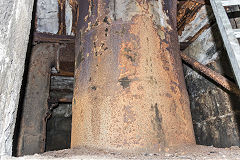
The vertical winding engine
|
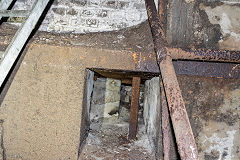
The vertical winding engine
|
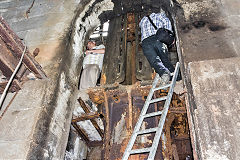
The vertical winding engine
|
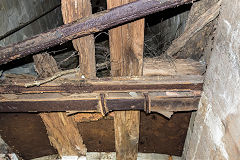
The vertical winding engine
|
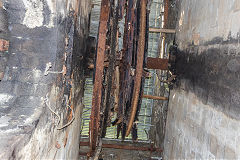
The vertical winding engine
|
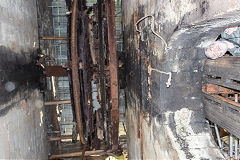
The vertical winding engine
|
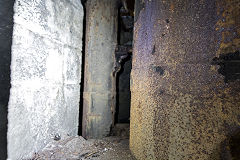
The vertical winding engine
|
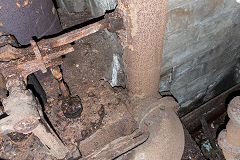
The vertical winding engine
|

The vertical winding engine
|
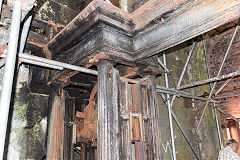
The vertical winding engine
|
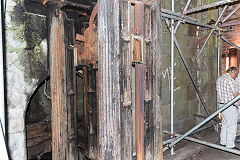
The vertical winding engine
|
|
|
Underneath the vertical Winding Engine House

Beneath the winding engine
|
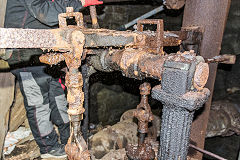
Beneath the winding engine
|
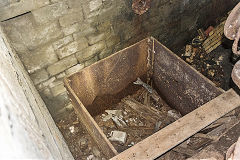
Beneath the winding engine
|
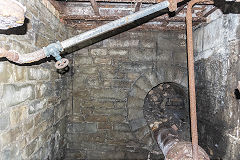
Beneath the winding engine
|
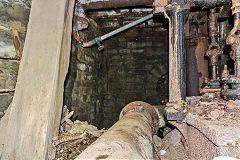
Beneath the winding engine
|
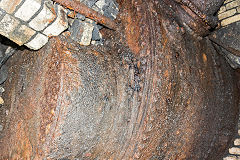
Beneath the winding engine
|
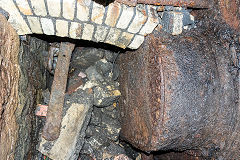
Beneath the winding engine
|
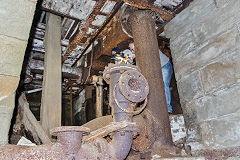
Beneath the winding engine
|

Beneath the winding engine
|
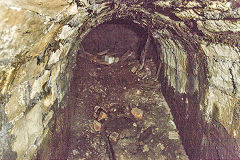
Beneath the winding engine
|
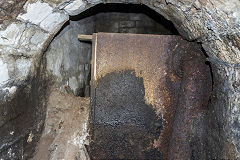
Beneath the winding engine
|
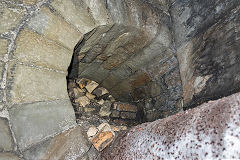
Beneath the winding engine
|

Beneath the winding engine
|

Beneath the winding engine
|
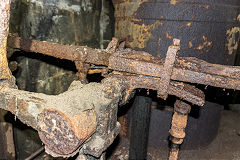
Beneath the winding engine
|
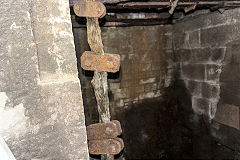
Beneath the winding engine
|
The Beam Engine
The 30 inch engine was built by the Neath Abbey Iron Co in 1845.

The 1845 Beam Engine
|
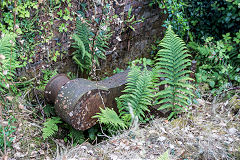
The 1845 Beam Engine
|
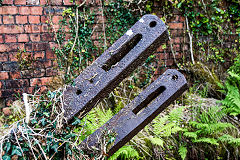
The 1845 Beam Engine
|
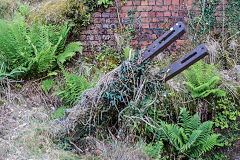
The 1845 Beam Engine
|
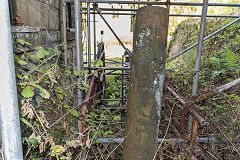
The 1845 Beam Engine
|
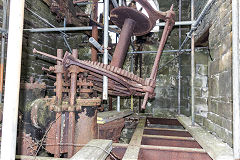
The 1845 Beam Engine
|
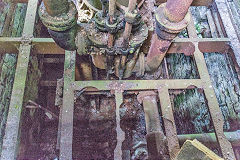
The 1845 Beam Engine
|
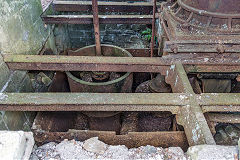
The 1845 Beam Engine
|

The 1845 Beam Engine
|

The 1845 Beam Engine
|
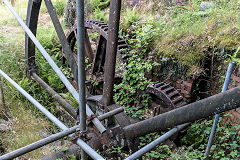
The 1845 Beam Engine
|
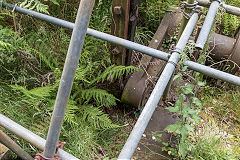
The 1845 Beam Engine
|
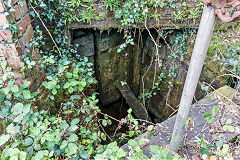
The 1845 Beam Engine
|
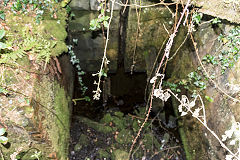
The 1845 Beam Engine
|
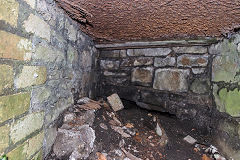
The 1845 Beam Engine
|
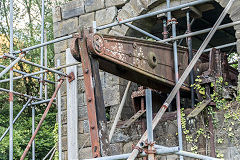
The 1845 Beam Engine
|
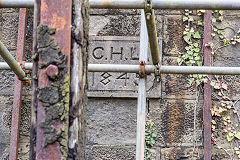
The 'CHL 1845' headstone
|
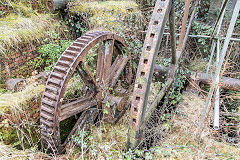
Beam Engine pumping gear
|
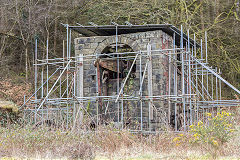
The 1845 Beam Engine
|
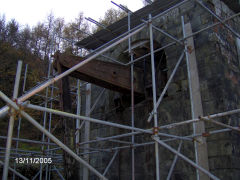
The 1845 Beam Engine
|
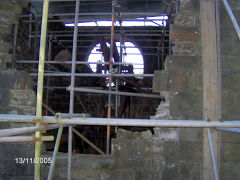
The 1845 Beam Engine
|

The 1845 Beam Engine
|
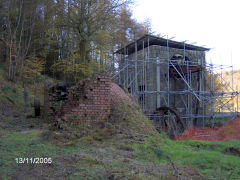
The 1845 Beam Engine
|
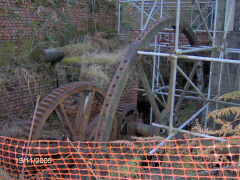
Beam Engine reduction gear
|
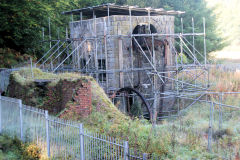
The 1845 Beam Engine
|
|
|
|
Upcast Shaft and Fan Drift
The original ventlaton system is likely to have been a furnace shaft but was more recently operated by a Scirocco fan driven originally by a belt from a small steam engine near it but possibly electricity later on. The fan drift is built of bricks which post-dates the rest of the site.
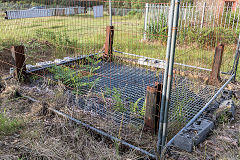
Upcast shaft
|
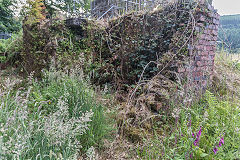
Fan Drift
|
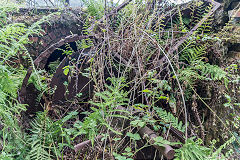
Fan Drift
|
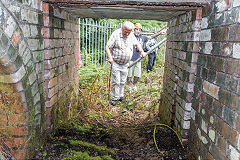
Fan Drift
|
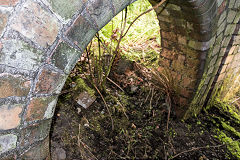
Fan Drift
|

Fan Drift
|
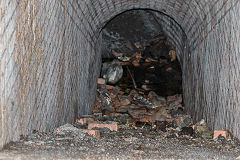
Fan Drift
|

Fan Drift
|
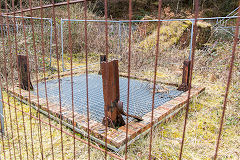
Upcast shaft
|
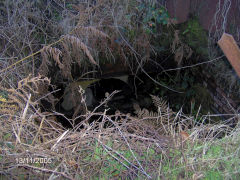
Upcast shaft
|
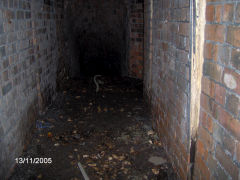
Inside the fan drift
|

Ventilation fan
|
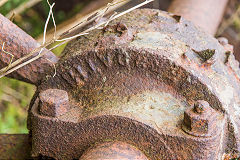
Ventilation fan
|
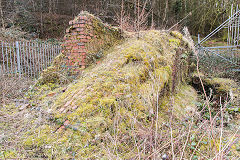
Ventilation house
|
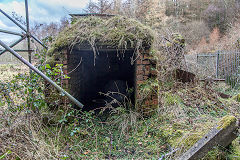
Ventilation house
|
|
Glyn Pits Nos 3 and 4 - SO 2669 0019
Glyn Pits Nos 3 and 4 were to the Northeast of the original colliery, connected by an incline that ran down to the GWR line. They first appear on the 1898 map as 'Glyn Collieries (Nos 3 and 4 pits)'. By 1920 the site is vacant with the Albion Road Colliery just yards away.

Glyn Pits Nos 3 and 4 in 1901
|

Glyn Pits Nos 3 and 4 in 1920
|
|
|
The Balance Pit - ST 2727 9994
The Balance Pit was sunk in 1832, consisting of two oval shafts of 25 ft by 9 ft and 88 yds deep with three reservoirs supplying the water for the balance. Its operation was similar to the Cwmbergwm example but the retarding system was by means of a hydraulic cylinder rather than a conventional brake.
The Balance Pit and House are shown on the 1880 and 1901 maps but the Balance Pit is marked 'disused' by 1920 and the site virtually cleared. Balance House is still shown on 1the 1964 map.
Balance House was possibly the Balance Pit overseer's house. Christine Peploe remembers "I was born in Balance House but I had not seen an actual photograph of the property. I only had my very vivid memories of living there as a child. My Grandfather David Reece bought Balance House from the Crumlin Valley Colleries Limited for £23.00 in 1928".
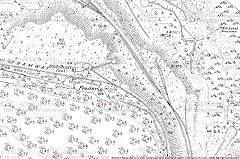
Balance Pit and House, 1882
|
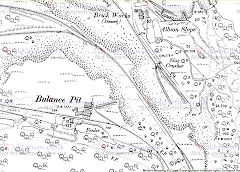
Balance Pit and House, 1901
|
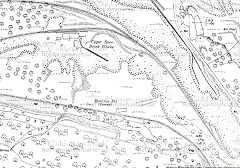
Balance Pit and House, 1920
|
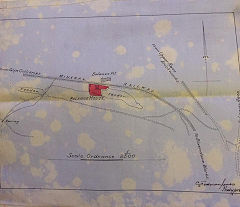
Plan of Balance Pit and House
|
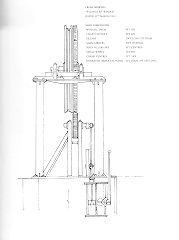
Balance Pit mechanism
|
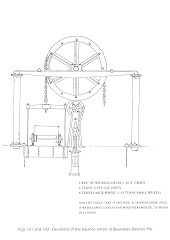
Balance Pit mechanism
|

Balance House conveyance
|
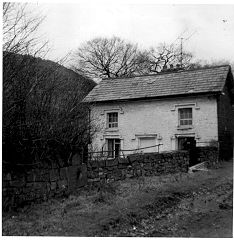
Balance House
|
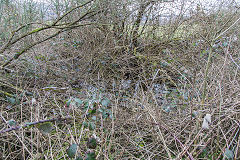
Balance Pit feeder
|

Site of the Balance Pit
|
|
|
The Colliery reservoir
The reservoir supplied water to the boilers and was breached in 1890 to flood the pit and extinguish the fire following the fatal explosion.

Glyn Pits reservoir dam
|
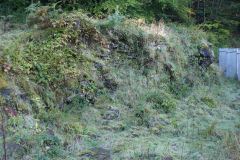
Glyn Pits reservoir dam
|

Glyn Pits reservoir dam
|
|
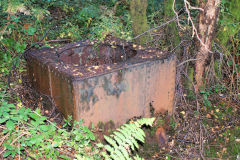
Glyn Pits iron tank
|
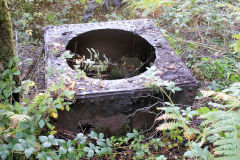
Glyn Pits iron tank
|
|
|
Glyn Pits Leat - ST 2618 9973
The leat fed the reservoir behind the pits and started further up the Glyn Valley. It can be traced for a lot of its route, particularly below Quarry Level where it runs on an impressive stone causeway.

Glyn Pits leat above branchline
|
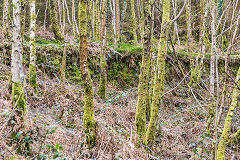
Glyn Pits leat above branchline
|

Glyn Pits leat causeway
|
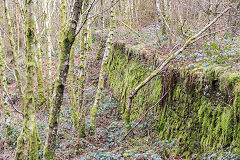
Glyn Pits leat causeway
|
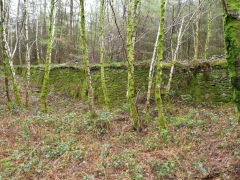
Glyn Pits leat causeway
|
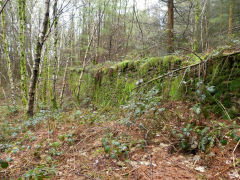
Glyn Pits leat causeway
|
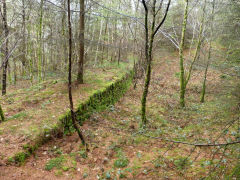
Glyn Pits leat causeway
|
|
A working model of Glyn Pits
This is a large scale working model of Glyn Pits, built and operated by Clive Davies
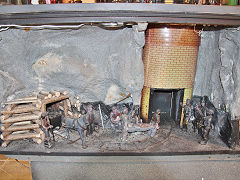
A working model of Glyn Pits
|
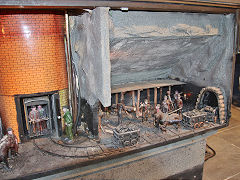
A working model of Glyn Pits
|
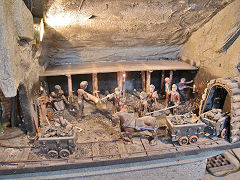
A working model of Glyn Pits
|
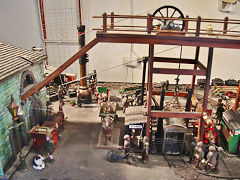
A working model of Glyn Pits
|
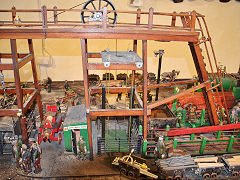
A working model of Glyn Pits
|

A working model of Glyn Pits
|
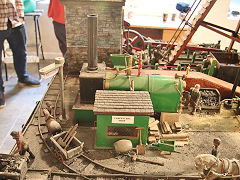
A working model of Glyn Pits
|
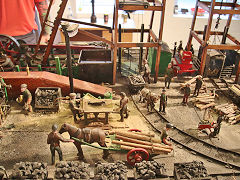
A working model of Glyn Pits
|
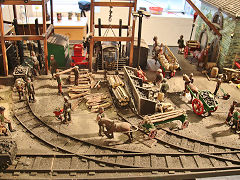
A working model of Glyn Pits
|
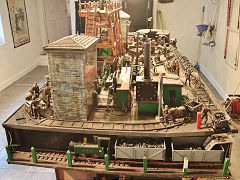
A working model of Glyn Pits
|
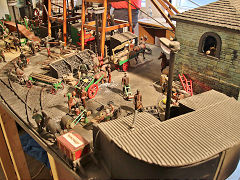
A working model of Glyn Pits
|
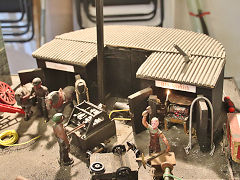
A working model of Glyn Pits
|
